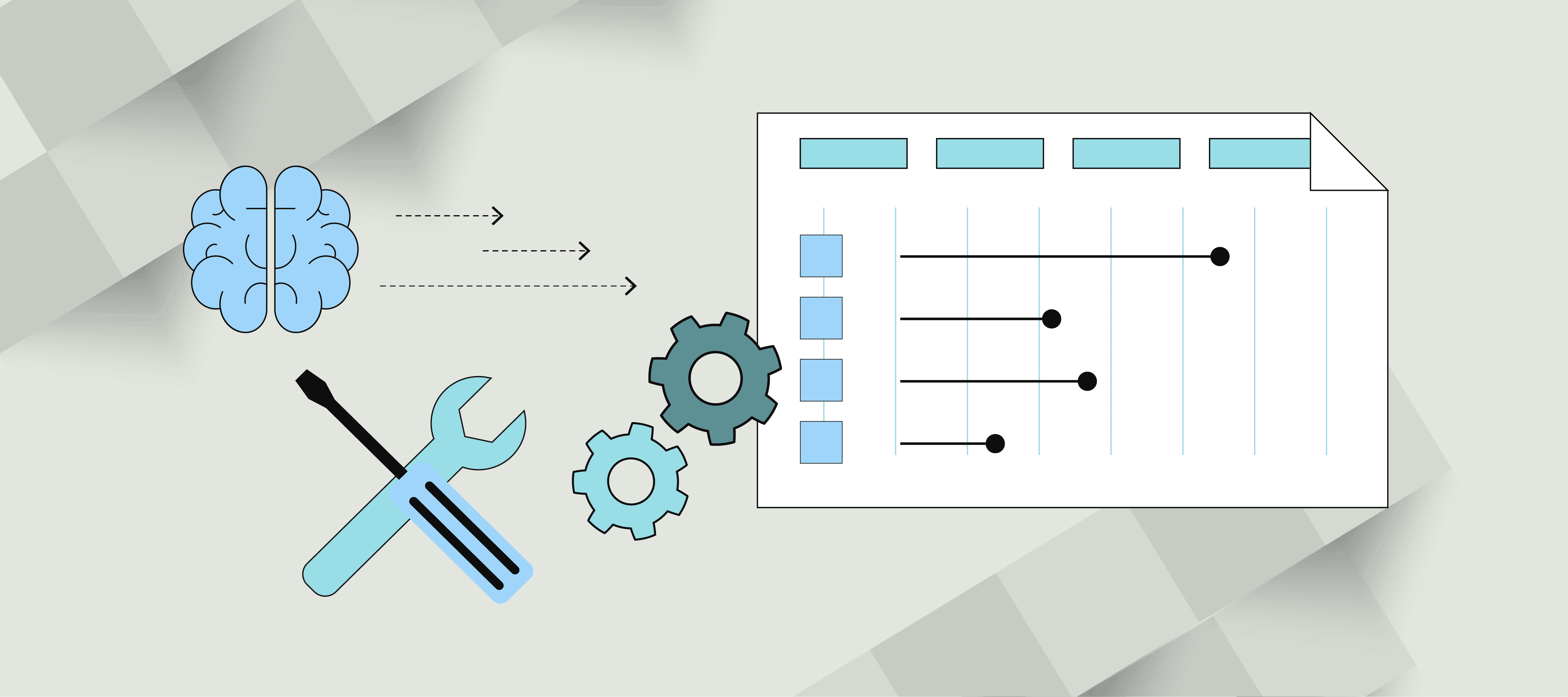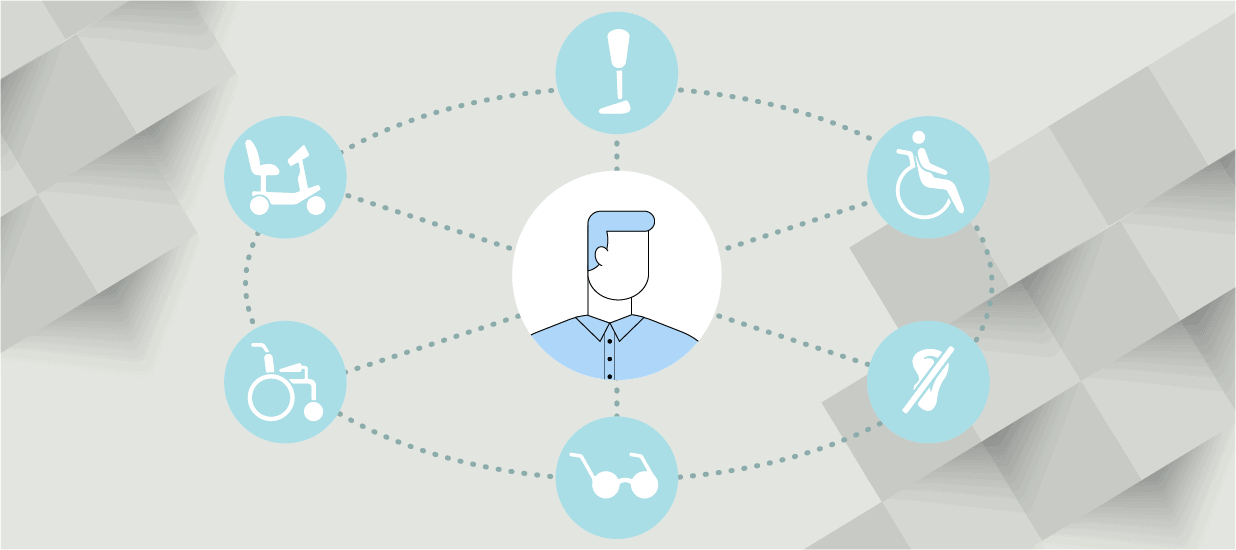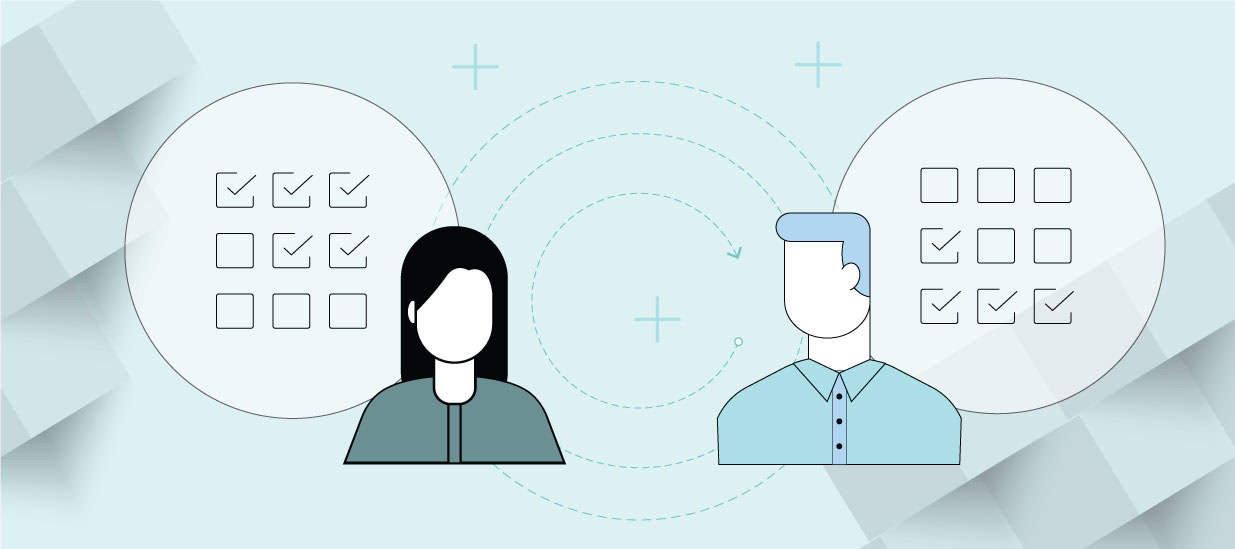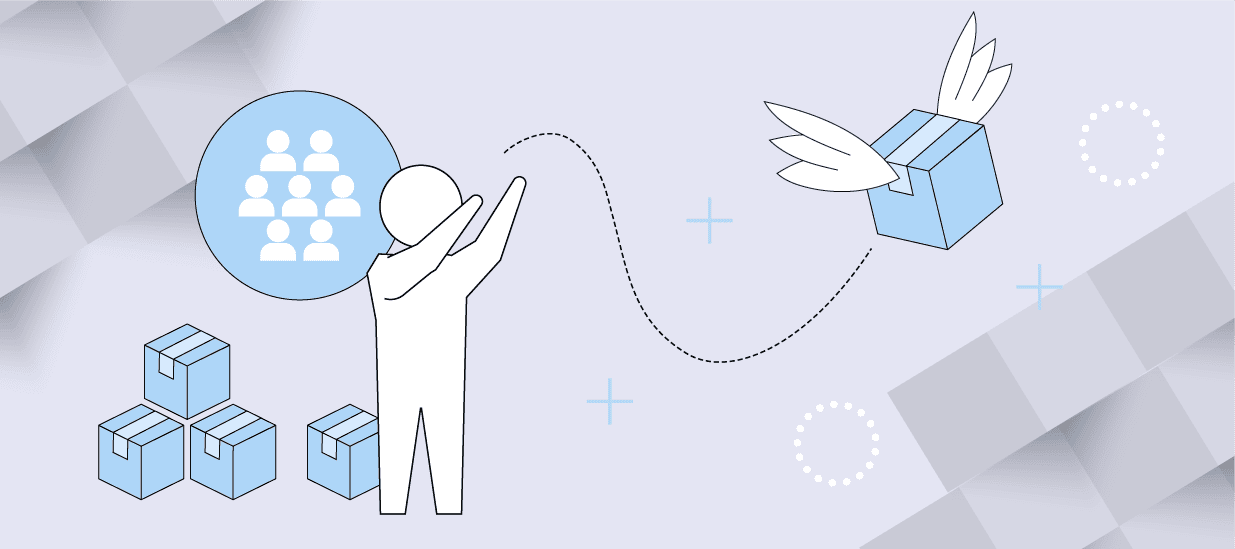7 minute read
Product roadmaps are essential to move products from concept to launch. Learn how to build a product roadmap by setting goals, prioritizing product requirements, and keeping teams aligned with communication.
Launching a product is like exploring a new country. It’s exciting and much easier if you have a map. Product roadmaps are the blueprints that help you coordinate different teams, prioritize features and functionalities, and communicate clearly with stakeholders. In this article, we explore how to build a product roadmap and cover common challenges and solutions for product roadmapping.
Read on to learn more, or use the links below to jump to the section that interests you.
- Planning Your Product Roadmap
- Gathering Product Requirements
- Building a Product Roadmap
- Roadmap Prioritization
- Communicating Product Roadmaps
- Maintaining and Updating
How to Build a Product Roadmap
A product roadmap is a high-level visual document that sets out the vision and direction of your product offering over time. Its primary goal is to create a shareable map for different teams to follow the journey of a product or feature set through design, development, and launch.
Planning Your Product Roadmap
When building a product roadmap, it’s crucial to remember that not everything can make the cut. As the person responsible for the roadmap, your role is to carefully select the items that align with the product’s vision and strategy.
Leverage market research. When deciding what to put on a product roadmap, you should weigh market conditions, company goals, customer feedback, team bandwidth, and other factors. To accomplish this, you need to gather input from internal teams to understand which items should go on your roadmap and how to prioritize them. You can collect this feedback in real-time through meetings or workshops or asynchronously through forms, project management tools, or shared documents. Before finalizing the roadmap, you should clarify anything unclear and ensure that all teams have visibility into the final version. Ultimately, the items that make it onto the final roadmap should be in service of solving meaningful market problems.
Establish a product vision. A product vision is a clear, long-term direction that pairs market research with your business’s strategic goals. It sits at the intersection of your market needs and your company’s goals. Ultimately, it should present a compelling case for what that need is, what product you’ll offer, and how it will meet that need.
Align to business goals. Once your team has decided on roadmap items, you need to define goals, select key performance indicators (KPIs), and devise a method of measuring progress. Since your roadmap should tie back to your company’s strategic objectives, it’s essential to project the long-term impact of your roadmap items, how you will measure that impact, how you consider it “complete,” and how you will communicate it.
Gathering Product Requirements
Product requirements are detailed descriptions of how a product can meet users’ needs through features, functionality, and requirements. They are often considered a blueprint that helps all stakeholders understand what needs to be in the final product.
There are multiple types of product requirements.
- Business requirements outline the strategic business goals that the product should achieve, such as revenue or customer acquisition.
- Functional requirements describe what the product should do, including specific tasks or behaviors, features, or functions.
- Non-functional requirements describe the quality of the product, including performance, reliability, usability, or security.
- Technical requirements include the technical standards and constraints to which the product should adhere, including scalability, compliance, or compatibility with other products.
When developing product requirements, you should involve different types of stakeholders and users to identify necessary features and requirements.
- Current customers and users provide essential insights into their needs, desires, and pain points.
- Development teams can offer technical expertise and provide input on feasibility and implementation processes.
- Design curates the user experience and interface.
- Customer support teams provide realistic insight into common user issues.
- Compliance and legal teams ensure that product requirements meet regulatory and legal guidelines.
- Executives provide input that helps the product align with business goals.
Building a Product Roadmap
When you build a product roadmap, you will have different options for formatting and prioritizing it. Start by identifying the type of roadmap you want to present and the format you want to use. Roadmaps are typically formatted in 3 main ways: with a dated timeline, without dates, or in a hybrid format.
- Dated formats are most helpful for roadmaps shared with multiple departments or with essential deadlines or dependencies. They help visualize the many moving parts that need to align for a successful product and map out the team’s long-term vision for it. Date formats are also suitable for internal teams.
- Undated formats offer more flexibility than dated timelines. They typically show items in a backlog, scheduled, or in progress. This format suits teams and companies with fast-changing priorities but may be less valuable for managing complex timelines. Undated formats are appropriate for executive or external stakeholders.
- Hybrid formats are the sweet spot in the middle. Rather than assigning rigid dates, you can map deliverables to months, quarters, or even buckets like “Current,” “Future,” or “Long-Term.” Bucketing helps visualize longer timelines without committing to set dates and is a suitable format for teams with fast-changing priorities or leadership stakeholders.
Regardless of the format you choose, whether you choose a format with hard dates or not, the timelines for your project may change over time. It’s important to plan for change and pick a format that will allow you to adapt your roadmap quickly. For this reason, hybrid formats are the best option for many teams.
Prioritizing Roadmaps
Once you align on product requirements, roadmap formats, and timelines, it’s essential to prioritize your product roadmap. Product roadmap prioritization is the process of identifying the order in which you will address features, enhancements, and other initiatives in product development.
Roadmap prioritization is a must-do step in building a product roadmap. It’s important because it helps your team focus on the most critical tasks that will bring value to your users and meaningfully solve pain points. Prioritization helps teams allocate resources, manage workloads, and identify and mitigate risks promptly.
There are several methods of product roadmap prioritization.
- The MoSCoW Method classifies features into four priority buckets: Must-Have, Should-Have, Could-Have, and Will-Not-Have. It is a dynamic prioritization method that allows priorities to change and evolve.
- The Kano Model is a way of visualizing parameters against two axes. The horizontal axis reflects implementation values (whether a customer need is unmet or fully met). The vertical axis reflects customer satisfaction (whether a customer is not satisfied or is fully satisfied). Plotting features on these axes allows you to plot features within three buckets: must-have/basic features (table stakes, where your customers won’t consider the product if you don’t have them), performance features (the more you invest in these features, the more satisfied your customers will be), and excitement features (customers don’t expect these, but will be delighted if you provide them).
- The RICE method helps you evaluate each feature against four factors: reach (how many people will the feature affect?), impact (how much will it impact individual users?), confidence (what is your level of confidence in your reach and impact scores?), and effort (how much time will product, design, and development need to invest?) Your RICE score is the calculation of Reach * Impact * Confidence / Effort
- The User Story Mapping method is a simple prioritization style. On a horizontal line, create sequential buckets representing each user journey stage. Beneath those buckets, list the functionalities or features and prioritize them in order of importance (the top of the list is the most important).
- The Cost of Delay framework considers the cost of not having a feature or functionality rather than the benefits of including it. To calculate the cost of delay, you can weigh each feature based on how much it would be worth if the product had it right now, how much it would be worth if the feature was made earlier, and how much it would cost if it was made later than planned.
- The OKR Alignment method prioritizes features based on alignment with the organization’s objectives and key results (OKRs). OKR alignment helps ensure that the roadmap contributes to strategic business goals.
Communicating
Tailor your roadmap to your audience. For the reasons we shared earlier, it may be valuable to customize your roadmap to fit your audience. If adjusting dates or priorities on the roadmap you’ve shared with your executive leadership team will cause confusion or stress, giving them a high-level roadmap that omits the nitty-gritty details better suited for internal teams may be best.
One solution is to work from a detailed master roadmap containing all of the information you (as the person responsible for roadmaps) need to know. From that master roadmap, you can iterate tailored roadmaps with appropriate information for their desired audience.
Communicate the roadmap effectively. When you share your roadmap with any teams (internal or external, with boots-on-the-ground team members or key stakeholders), don’t just email them a copy and call it a day.
You are responsible for clearly communicating the roadmap, linking it back to strategic business goals, and creating excitement and buy-in among different teams. Under-communicating or communicating with some teams rather than others risks siloing significant contributors or failing to share important information.
Leverage different communication methods, such as in-person meetings, stand-ups, and asynchronous communication, such as written emails or recordings, to provide context behind the roadmap. Be generous and allow people to ask questions, air concerns, or present new ideas or information. Use narrative and storytelling elements to engage your audience, especially when communicating with stakeholders whose buy-in you need for the project to be successful.
Maintaining and Updating
Above all, if you are responsible for a product roadmap, you are responsible for seeing it through to the end, through good times and bad. Again, planning for change, remaining flexible, and updating your roadmap is essential. When you kick off a project, you are responsible for socializing the roadmap and ensuring that teams are aligned. You are also responsible for ensuring alignment (and helping correct misalignment) throughout the design, development, and deployment process.
That you are responsible for diligently updating the primary roadmap when plans change and cascading those changes to any secondary roadmaps you’ve shared with specific teams.
Common Challenges for Roadmaps
When you build a product roadmap, you may encounter some challenges. Luckily, many of these challenges are common, and you can overcome them with planning.
Challenge: Aligning stakeholder interests can be complex when different stakeholders have different priorities and points of view.
Solution: Create plans to communicate regularly with stakeholders and find different communication methods. Set clear, measurable objectives that help you track progress on competing priorities. You should also use collaborative tools, communication strategies, and workshops to build consensus and buy-in.
Challenge: Balancing short-term and long-term goals can be difficult when you want to score quick wins while working toward distant strategic initiatives.
Solution: Use clear roadmap prioritization frameworks to evaluate and rank priorities and communicate your prioritization criteria with stakeholders. That can ensure that everyone understands how you are prioritizing and creates a common framework. Set regular review cycles and adjust the roadmap accordingly.
Challenge: Change management amidst evolving market conditions, customer needs, and technologies makes it difficult to maintain a roadmap.
Solution: Tailor your communication to different audiences so you’re not overloading them with changing information (that they might not need to know)! Use regular communication with disparate teams to identify risks or disruptions to your roadmap and create plans to address them.
Author
-

The Pragmatic Editorial Team comprises a diverse team of writers, researchers, and subject matter experts. We are trained to share Pragmatic Institute’s insights and useful information to guide product, data, and design professionals on their career development journeys. Pragmatic Institute is the global leader in Product, Data, and Design training and certification programs for working professionals. Since 1993, we’ve issued over 250,000 product management and product marketing certifications to professionals at companies around the globe. For questions or inquiries, please contact [email protected].
View all posts








